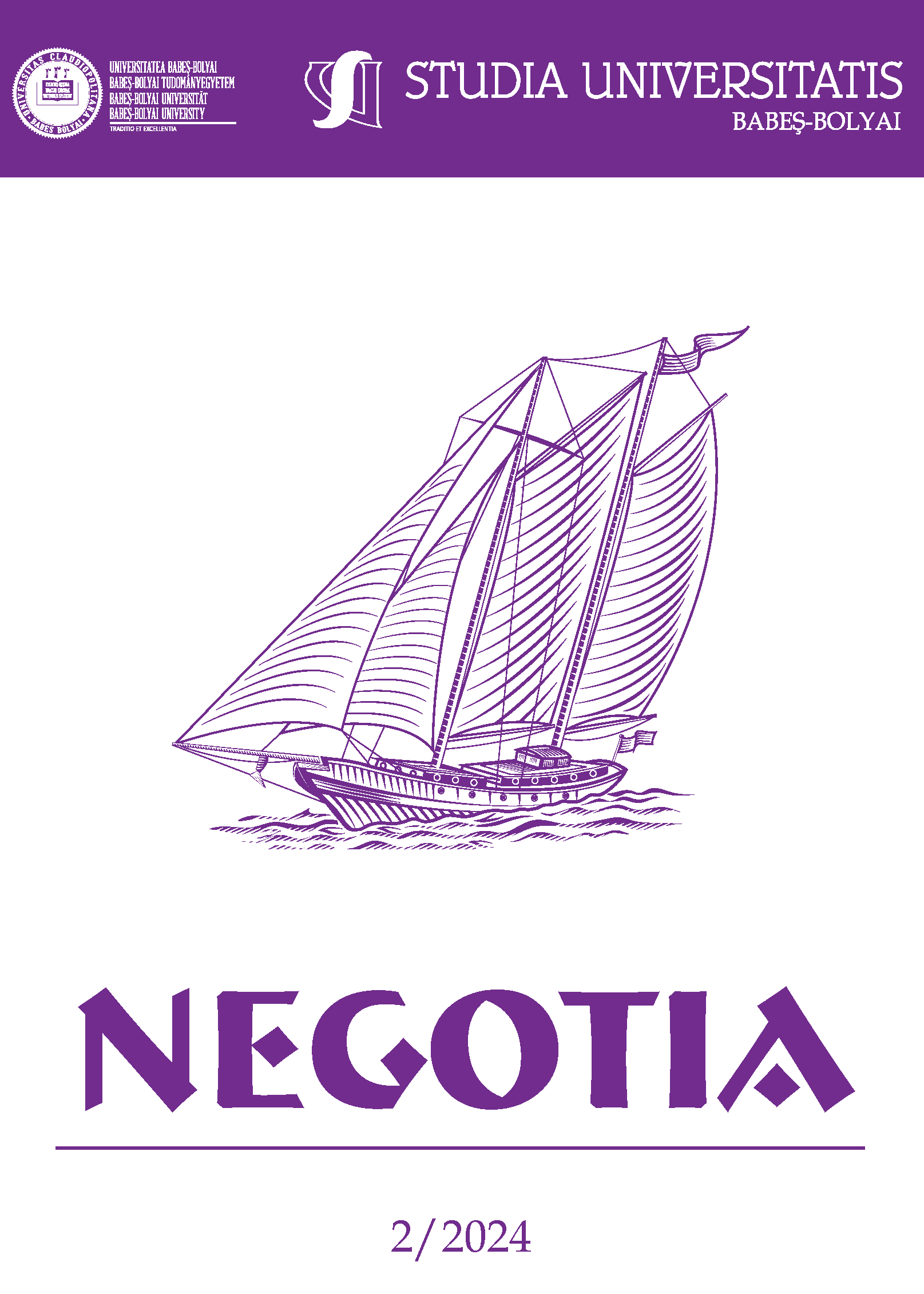Portfolio Diversification Opportunities in Traditional Energy and Alternative/Renewable Energy ETF Segments
DOI:
https://doi.org/10.24193/subbnegotia.2024.2.03Keywords:
portfolio diversification, ETFs, traditional energy, renewable energy, VAR-ADCC-GARCH ModelAbstract
Article history: Received: April 8, 2024; Reviewed: May 31, 2024;
Accepted: June 21, 2024; Available online: June 30, 2024.
This study evaluates the diversification benefits of investing in traditional and alternative/renewable energy Exchange Traded Funds (ETFs) using the VAR-ADCC-GARCH model to analyze yields, correlations, and volatilities. The results demonstrate that alternative/renewable energy ETFs not only offer higher average returns but also significantly reduce portfolio risk compared to traditional energy ETFs. The research underscores the distinct investment dynamics between the two ETF segments, highlighting the advantages of incorporating renewable energy assets into diversified portfolios. These findings support the inclusion of environmentally-conscious investment strategies that effectively balance risk and return, emphasizing their importance for investors aiming to optimize their portfolios in line with sustainable practices.
JEL classification: G11, C58, A100, A110
References
Badshah, I. U. 2017. Volatility spillover from the fear index to developed and emerging markets. Emerging Markets Finance and Trade, 54(1), 27–40, https://doi.org/10.1080/1540496X.2016.1220294
Beber, A., & Pagano, M. 2012. Short-selling bans around the world: Evidence from the 2007–09 crisis. The Journal of Finance, 68(1), 343–381. https://doi.org/10.1111/j.1540-6261.2012.01802.x
Bohl, M. T., Reher, G., & Wilfling, B. 2016. Short selling constraints and stock returns volatility: Empirical evidence from the German stock market. Economic Modelling, 58, 159–166. https://doi.org/10.1016/j.econmod.2016.05.025
Bollerslev, T. 1986. Generalized Autoregressive Conditional Heteroskedasticity. Journal of Econometrics, 31(3), https://doi.org/10.1016/0304-4076(86)90063-1
Bouri, E., Gupta, R., Tiwari, A.K., and Roubaud, D. 2017. Does Bitcoin hedge global uncertainty? Evidence from wavelet-based quantile-in-quantile regressions. Finance Research Letters, 23, 87-95, https://doi.org/10.1016/j.frl.2017.02.009
Cappiello, L., Engle, R. F., & Sheppard, K. 2006. Asymmetric Dynamics in the Correlations of Global Equity and Bond Returns. Journal of Financial Econometrics, 4(4), 537-572. DOI:10.2139/ssrn.376223. RePEc. University of Oxford, https://dx.doi.org/10.2139/ssrn.376223
Diether, K. B., Lee, K.-H., & Werner, I. M. 2009. Short-sale strategies and return predictability. The Review of Financial Studies, 22(2), 575–607. https://doi.org/10.1093/rfs/hhn047
Henrique, B.M., Sobreiro, V.A., and Kimura, H. 2019. Renewable energy and market performance: Evidence from wind and solar sectors. Energy Economics, 78.
Engle, R. F. (1982). Autoregressive Conditional Heteroskedasticity with Estimates of the Variance of United Kingdom Inflation. Econometrica, 50(4), 987-1007, https://doi.org/10.2307/1912773
Ewing, B. T., Malik, F. 2005. Re-examining the asymmetric predictability of conditional variances: the role of sudden changes in variance. Journal of Banking and Finance, 29, 2655–2673, https://doi.org/10.1016/j.jbankfin.2004.10.002
Gupta, R., Donleavy, G. D. 2009. Benefits of diversifying investments into emerging markets with time-varying correlations: an Australian perspective. Journal of Multinational Financial Management, 19, 160–177, https://doi.org/10.1016/j.mulfin.2008.10.001
Grullon, G., Michenaud, S., Weston, J. P. 2015. The real effects of short-selling constraints. The Review of Financial Studies, 28(6), 1737–1767. https://doi.org/10.1093/rfs/hhv013
Kalotychou, E., Staikouras, S. K., Zhao, G. 2014. The role of correlation dynamics in sector allocation. Journal of Banking and Finance, 48, 1–12, http://dx.doi.org/10.1016/j.jbankfin.2014.06.025
Markowitz, H. 1952. Portfolio Selection. Journal of Finance, 7(1), 77-91, https://doi.org/10.2307/2975974
Miralles-Marcelo, J. L., Miralles-Quiros, M. M., Miralles-Quiros, J. L. 2018. Are alternative energies a real alternative for investors? Energy Economics, 78, https://doi.org/10.1016/j.eneco.2018.12.008
Salisu, A. A., Obiora, K. 2021. COVID-19 pandemic and the crude oil market risk: hedging options with non-energy financial innovations. Financial Innovation, 7, Article number: 34, https://doi.org/10.1186/s40854-021-00253-1
Sharpe, W.F. 1966. Mutual Fund Performance. Journal of Business, 39(1), 119-138.
Ullah, M. I. 2021. Volatility Transmission from Oil Market to Industry Returns: An Evidence from DCC & ADCC GARCH Model. Islamabad: Pakistan Institute of Development Economics.
Yuan, T., Gupta, R., Roca, E. 2016. Why not diversify into emerging equity markets via ADRs? The Journal of Investing, 25(2), 18–27, https://doi.org/10.3905/joi.2016.25.2.018
Zhou, J., Nicholson, J. R. 2015. Economic value of modeling covariance asymmetry for mixed-asset portfolio diversifications. Economic Modelling, 45, 14–21, https://doi.org/10.1016/j.econmod.2014.10.054
Downloads
Published
How to Cite
Issue
Section
License
Copyright (c) 2024 Studia Universitatis Babeș-Bolyai Negotia

This work is licensed under a Creative Commons Attribution-NonCommercial-NoDerivatives 4.0 International License.






